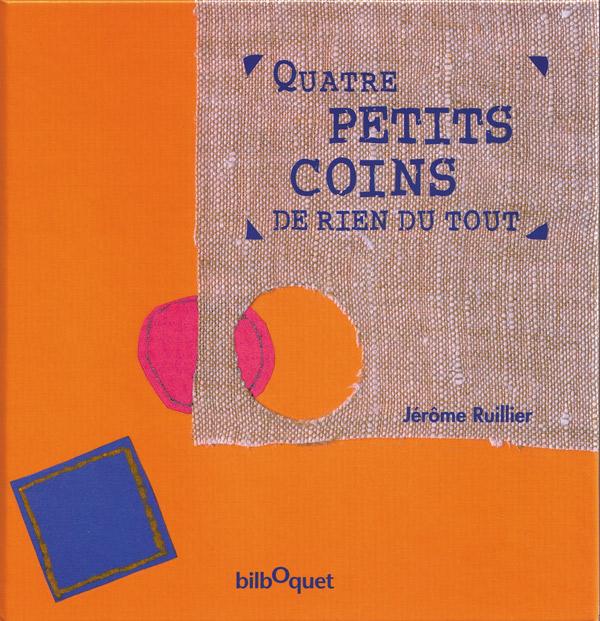 by Jérôme Ruillier
by Jérôme Ruillier
Petit-Carré joue avec ses amis les Petits Ronds, mais lorsque la cloche sonne il ne peut pas rentrer par la porte comme ses amis. Malgré tous ses efforts, Petit-Carré ne sera jamais rond, alors chacun cherche une solution pour lui permettre d’entrer dans la grande maison. Un album sur le partage qui permet de lutter contre l’exclusion.
Strategies/Skills Used
Reading Strategy 5: Make mental pictures.
Reading Strategy 8: Extract information from text, charts, graphs, maps and illustrations.
Reading Strategy 9: Identify and interpret literary elements in different genres.
Reading Strategy 11: Make inferences and draw conclusions.
Reading Strategy 12: Reflect and respond.
 TEACHING THE ACTIVITY: PRE-READING
TEACHING THE ACTIVITY: PRE-READING
 (1) Using the PowerPoint, review, practice and learn the French vocabulary for colours, beside, circles, and squares from the story (jaune, noir, rose, blanc, jaune, bleu, à côté de, cercle, carré).
(1) Using the PowerPoint, review, practice and learn the French vocabulary for colours, beside, circles, and squares from the story (jaune, noir, rose, blanc, jaune, bleu, à côté de, cercle, carré).
(2) Model the Barrier Games process with class as a whole using a simple arrangement of coloured circles and one square on burlap as in the final illustration in the book.
(3) Arrange students in two teams and facilitate the process of playing a barrier game. To ensure success, reveal the circles and square one at a time to students. One student at a time comes up to the front, sees the visual the teacher is hiding, then returns to his/her group and provides oral instructions using learned vocabulary to re-create the image the teacher has hidden.
(4) Once teams have completed creating the image, reflect together on the success of the activity and the process of providing instructions.
 TEACHING THE ACTIVITY: DURING READING
TEACHING THE ACTIVITY: DURING READING
(5) Read the book Quatre petits coins de rien du tout by Jérome Ruillier, pausing as students notice the shapes and colours from the barrier game they played.
(6) Have students chant and practice the new French vocabulary as you read the story. Do they notice that the story uses the term Rond for the circles? Discuss what this means.
(7) Use the Bubble Thinking process. Ask students how they think the square is feeling at the beginning of the story when he is playing with the circles. Then ask the same thing when all the circles enter the house but he cannot. Ask the student to bubble think how the circles feel when they realize their friend can’t come in the house. Use the Les bulles de pensées Graphic Organizer to support this part of the activity.
(8) Stop at the page where the square says he is sad he can’t enter the house with the others and ask students if they have any suggestions on how to solve this problem.
 TEACHING THE ACTIVITY: POST-READING
TEACHING THE ACTIVITY: POST-READING
(9) Ask students if they have ever felt left out and how it felt. Discuss feelings, ways to include others and the moral implications of the story in regards to being who we are, including others, and problem solving.
(10) Provide students with circle and square stamps (sponges, blocks, or cardboard cut-outs) and tempura paint (using the colours from the story). Ask students to re-create and interpret the story by creating a picture. Continue to practice and review the vocabulary of the story.
 TEACHING THE ACTIVITY: POST-READING EXTENSIONS
TEACHING THE ACTIVITY: POST-READING EXTENSIONS
(11) Numeracy: Place a number of different-sized circles and squares made of different materials (plastic, wood, cardboard, paper) in a bag so that students cannot see them. Ask students to come up one at a time and pull up an item without revealing what it is. Ask the student to guess what shape they think it is without being able to see and then discuss why they thought that (by deciding on the characteristics of each shape). Students could also do a sorting activity with the shapes.
There are numerous resources online that accompany this story.
 Here is the link to a class of students re-creating the story using cardboard cutouts. It is less than three minutes in length.
Here is the link to a class of students re-creating the story using cardboard cutouts. It is less than three minutes in length.
 Here is a link to a stop-motion animation video with student voices re-creating the story. It is just over three minutes in length.
Here is a link to a stop-motion animation video with student voices re-creating the story. It is just over three minutes in length.
 Here is a link to a published kindergarten resource from France that includes many activities to do in the classroom with this book.
Here is a link to a published kindergarten resource from France that includes many activities to do in the classroom with this book.